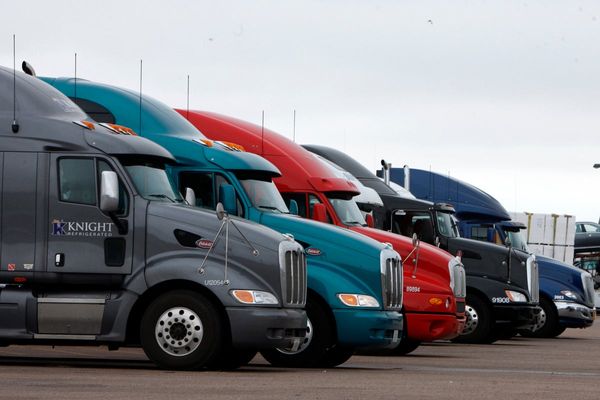
Within a few weeks of the start of the pandemic, Kate Maehr saw lines outside some Chicago-area food pantries that she measured in city blocks.
“We doubled the size of our output to make sure that our neighbors had the food that they needed to get by,” said Maehr, the executive director and CEO of the Greater Chicago Food Depository, which houses and distributes food from its 278,000-square-foot South Side facility to some 700 soup kitchens, food pantries and other facilities across Cook County.
Though those lines have since shrunk, the need for food remains “staggering,” Maehr said this week.
Blame inflation, worldwide supply chain issues, the end of the monthly child tax credit payments, among other reasons, she says.
“Need is up again. More people turning to food pantries this month than last. We are not out of the woods,” Maehr said.
To help in the battle against hunger, the food pantry announced plans this week to build a new 36,700-square-foot facility, including a commercial kitchen, at the current Archer Heights location on the Southwest Side. The facility, which also will house a nutrition education center and expanded parking, will allow the agency to prepare and distribute about 10,000 meals a day — compared with 600 currently, the agency said. That’s about 2.5 million meals annually.
It’s a project that was supposed to start back in 2020, but had to be put on hold because of the pandemic, Maehr said.
The pause allowed the food depository staff to tweak the mission of the new facility — to put a greater emphasis on food for people living with disabilities, older people and those who have chronic illness.
“The number of people with chronic health conditions, who can’t just go out and order a pizza, who have very specific dietary requirements — that population was bigger than we had initially anticipated,” Maehr said. “So we made the decision that our facility was going to be honed to specifically make it possible for us to prepare meals from scratch, using the healthiest ingredients.”
The existing programs to help older people in need are “really inadequate. We have a safety net that has been stretched and in some cases has big gaping holes,” Maehr said.
The planned Southwest Side facility, expected to be operational in late 2023, is the second phase of a $53 million project. The first phase — upgrading the agency’s warehouse — was completed in 2019, also at the current site.







